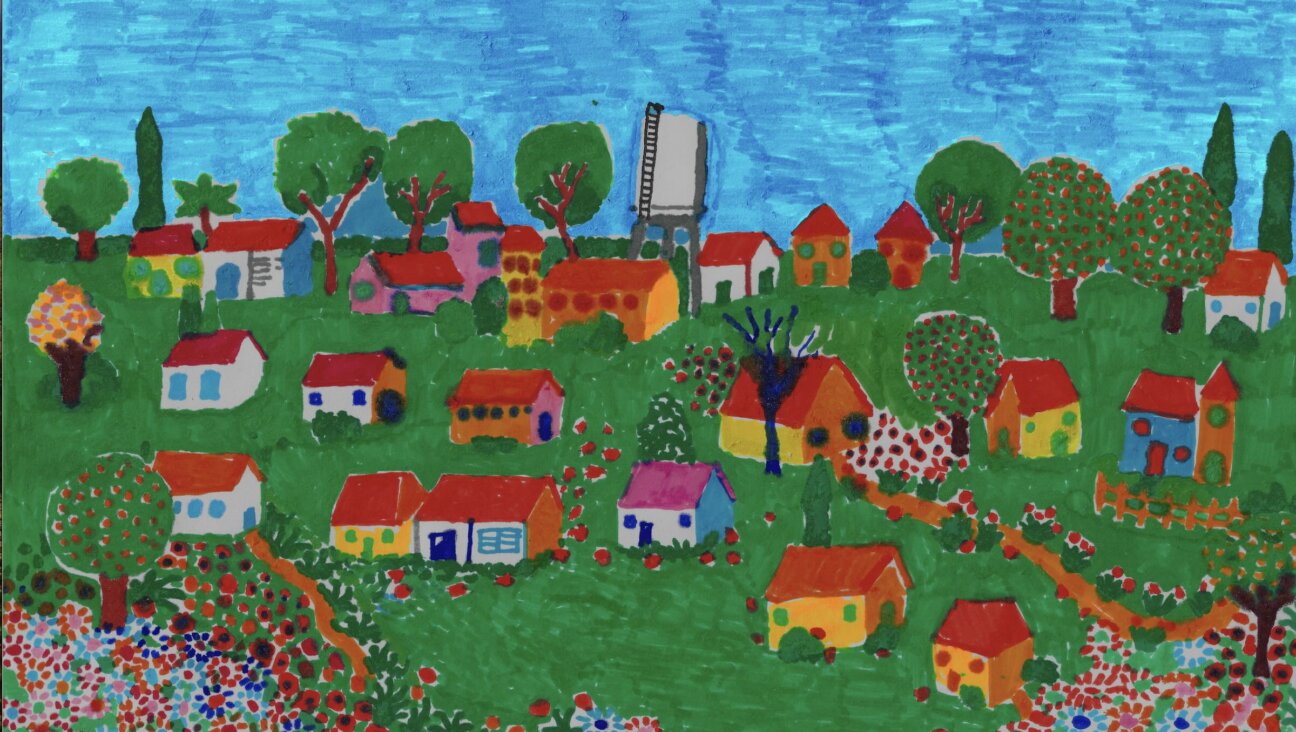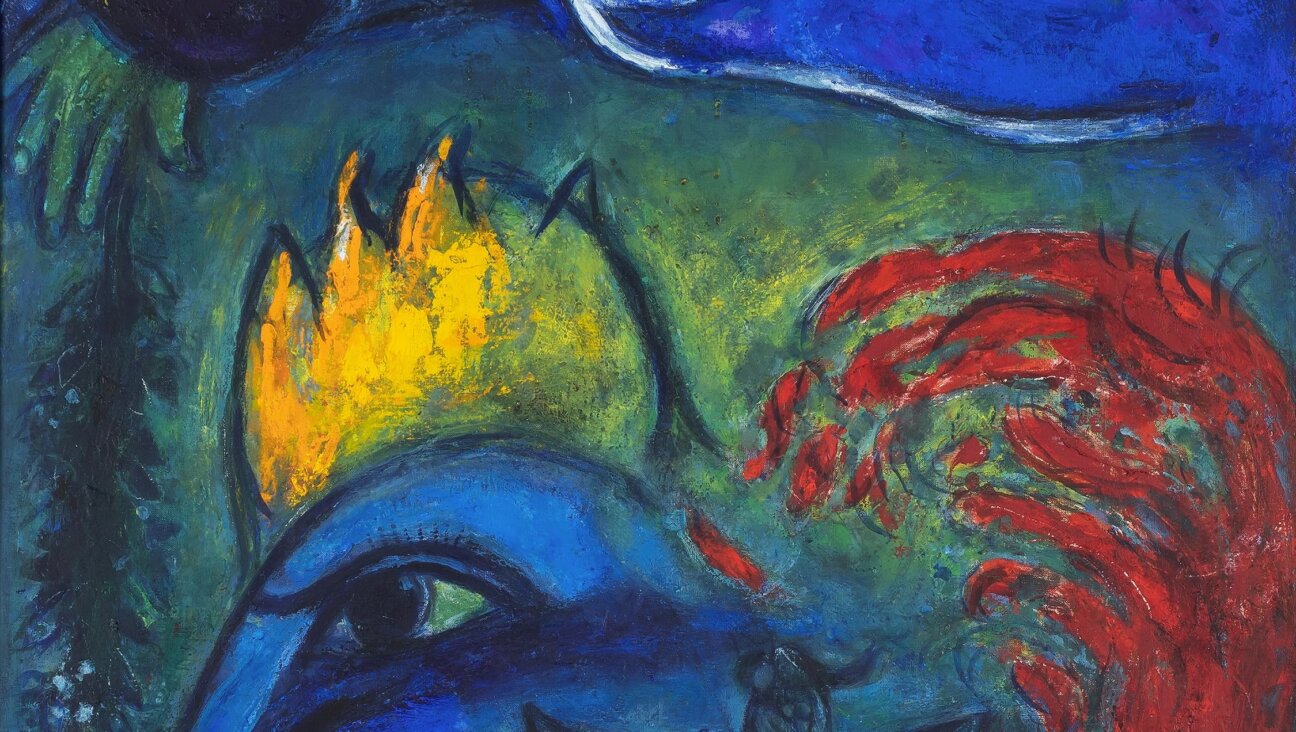The Exhilarating Passions of Marc Chagall

Image by Courtesy ShiM-Film Pictures
“Chagall-Malevich” is an exhilarating paean to the uplifting power of art.
Part docu-drama, part fantasy, the film is largely based on the life of Marc Chagall, widely considered the greatest Jewish artist of the 20th Century.
Born Moishe Shagal into a Hasidic community in the Pale of the Settlement, Chagall found and pursued his passion early in life. He attended art school in St. Petersburg and then moved to Paris. There, after additional study, he found considerable success, before returning to his home in Vitebsk and to his fiancée, Bella Rosenfeld.
On his return, Chagall (played by Leonid Bichevin) weds Bella (Kristina Schneidermann). Fortunately, a childhood friend of both bride and groom, Naum (Semyon Shkalikov), is the local Red Army commissar. Though a slightly bitter failed suitor of Bella, he arranges for Marc to found the Vitebsk Arts College.
It did not happened in the manner depicted here. Chagall was one of the country’s most distinguished artists and didn’t need a local commissar to find him a position. Nevertheless, there’s universal agreement that his fervor attracted some of the most highly regarded artists as professors.
Chagall, himself, was open to all styles of art — though that later would cause him difficulty when a rival, Kazimir Malevich (Anatoliy Belyy), found favor with the authorities.
Though his supporters felt Malevich was undermining Chagall, and urged their master to get rid of him, Chagall refused. He had no time or temperament for politics; all he cared about was art.
Ultimately, Chagall and his family were forced to flee Vitebsk; I won’t spoil the totally satisfying denouement by revealing how they make their art-related escape. But it is pitch perfect.
I’m a sucker for films about artists and their passions. I enjoyed “Pollock,” Ed Harris’s reasonably straightforward biopic about splatter artist Jackson Pollock. But I adored “American Splendor” (about graphic artist Harvey Peckar) and “Frieda” (about Frieda Kahlo). Both used the artists’ paintings and drawings as virtual characters, helping infuse the films with a greater sense of their spirit and fervor.
And so it with “Chagall-Malevich,” which director Alexander Mitta injects with surrealistic imagery that invokes Chagall’s phantasmagorical works and his almost addictive compulsion to produce art.
Mitta also sensitively recreates the Hasidic world of the Pale in the years immediately before and after the Russian Revolution.
Not that I don’t have a nit to pick. The film is in Russian with English subtitles. Balancing between watching the actors and reading is a circus act under the best of circumstances. Here, though, it’s more difficult than normal because too often the words blend into the background visuals, making them unintelligible.
Still, “Chagall-Malevich” is inspiring and well worth the effort.
A message from our Publisher & CEO Rachel Fishman Feddersen

I hope you appreciated this article. Before you go, I’d like to ask you to please support the Forward’s award-winning, nonprofit journalism during this critical time.
We’ve set a goal to raise $260,000 by December 31. That’s an ambitious goal, but one that will give us the resources we need to invest in the high quality news, opinion, analysis and cultural coverage that isn’t available anywhere else.
If you feel inspired to make an impact, now is the time to give something back. Join us as a member at your most generous level.
— Rachel Fishman Feddersen, Publisher and CEO
























